How to select the appropriate material for double-ridge waveguide terminations?
Selecting the appropriate material for Double Ridge Waveguide Termination is a critical decision that significantly impacts the performance, durability, and efficiency of microwave systems. The material choice directly influences key parameters such as power handling capability, thermal management, electrical conductivity, and overall system reliability. As modern communication systems demand increasingly higher frequencies and greater power handling capabilities, understanding the material properties and selection criteria becomes paramount for engineers and system designers. This article provides comprehensive guidance on navigating the complex considerations involved in choosing the optimal materials for double-ridge waveguide terminations across various applications, from satellite communications to defense systems.
Material Properties and Their Impact on Performance
Understanding the fundamental properties of different materials is essential for making informed decisions about Double Ridge Waveguide Termination components. The material selection directly influences electrical performance, mechanical stability, and long-term reliability in demanding operational environments.
Electrical Conductivity Considerations
The electrical conductivity of materials used in Double Ridge Waveguide Termination plays a pivotal role in determining insertion loss and signal integrity. Materials with higher conductivity, such as silver, copper, and gold, offer superior performance by minimizing resistive losses and enhancing signal transmission efficiency. Silver exhibits the highest electrical conductivity among metals, approximately 6.30 × 10^7 S/m, making it ideal for high-frequency applications where minimal signal attenuation is critical. Copper follows closely with a conductivity of 5.96 × 10^7 S/m, offering an excellent balance between performance and cost-effectiveness. Advanced Microwave utilizes these high-conductivity materials in their Double Ridge Waveguide Termination products to ensure optimal performance across frequencies ranging from DC to 110 GHz. The superior conductivity of these materials enables the terminations to maintain low VSWR (Voltage Standing Wave Ratio), which is essential for minimizing signal reflections and maintaining signal integrity in sophisticated communication systems. For applications requiring enhanced corrosion resistance without significantly compromising conductivity, gold plating is often applied to copper substrates, providing a balance between performance and environmental durability.
Thermal Management Capabilities
Effective thermal management is crucial for Double Ridge Waveguide Termination components, particularly in high-power applications where heat dissipation becomes a limiting factor. Materials with high thermal conductivity facilitate efficient heat transfer away from critical components, preventing performance degradation and ensuring long-term reliability. Aluminum, with its thermal conductivity of approximately 237 W/(m·K), offers excellent heat dissipation while providing the additional benefit of lightweight construction. Brass, a copper-zinc alloy, provides a good compromise with thermal conductivity around 109 W/(m·K) while offering enhanced machinability and mechanical strength. These materials are strategically employed by Advanced Microwave in their Double Ridge Waveguide Termination designs to optimize thermal performance under varying operational conditions. The efficient heat dissipation capabilities of these materials enable the terminations to maintain stable performance even in demanding environments with high ambient temperatures or significant power fluctuations. For applications requiring extreme thermal stability, specialized alloys or composite materials may be incorporated into specific regions of the termination structure, creating thermal pathways that direct heat away from sensitive components while maintaining the electrical integrity of the waveguide system.
Mechanical Strength and Durability
The mechanical properties of materials used in Double Ridge Waveguide Termination significantly impact their performance reliability, especially in applications subject to vibration, shock, or extreme environmental conditions. Materials must possess sufficient tensile strength, fatigue resistance, and dimensional stability to maintain precise waveguide geometries under varying conditions. Aluminum alloys, particularly the 6000 series (Al-Mg-Si), offer an excellent combination of strength-to-weight ratio and corrosion resistance, making them suitable for aerospace and portable applications where weight considerations are paramount. Brass provides superior machinability and thread strength, which is beneficial for components requiring intricate features or threaded connections. Advanced Microwave's Double Ridge Waveguide Termination products leverage these mechanical properties to ensure reliable performance in challenging environments, from satellite communications to defense systems. The dimensional stability of these materials is particularly important for maintaining consistent electrical performance across temperature variations, as thermal expansion can alter critical waveguide dimensions and affect impedance matching. For applications involving extreme temperature cycles or mechanical stress, specialized heat treatments or material combinations may be employed to enhance the long-term stability and reliability of the termination components, ensuring they maintain their specified electrical performance throughout their operational lifetime.

Application-Specific Material Selection Guidelines
Different applications place unique demands on Double Ridge Waveguide Termination components, necessitating tailored material selections that optimize performance for specific operational requirements and environmental conditions.
Materials for Aerospace and Defense Applications
Aerospace and defense applications impose stringent requirements on Double Ridge Waveguide Termination components, including exposure to extreme temperatures, high altitude conditions, and potentially corrosive environments. For these demanding scenarios, materials must balance optimal electrical performance with exceptional environmental resilience. Aluminum alloys, particularly the 7075-T6 grade, offer an excellent combination of high strength-to-weight ratio and good electrical conductivity, making them ideal for airborne systems where weight considerations are critical. These alloys are often anodized to enhance corrosion resistance while maintaining acceptable electrical performance. For space applications, where vacuum conditions and radiation exposure present additional challenges, specialized materials like beryllium copper or gold-plated aluminum may be employed. Advanced Microwave's Double Ridge Waveguide Termination products for defense and aerospace applications incorporate these specialized materials to ensure reliable operation in mission-critical systems. The company's manufacturing processes include rigorous testing under simulated environmental conditions to verify performance stability across the expected operational envelope. Additionally, for applications requiring enhanced EMI/EMC (Electromagnetic Interference/Electromagnetic Compatibility) protection, materials with specific shielding properties may be integrated into the termination design, ensuring that sensitive electronic systems remain protected from external interference while maintaining optimal waveguide performance across the wide frequency range from DC to 110 GHz.
Materials for Satellite Communication Systems
Satellite communication systems require Double Ridge Waveguide Termination components that can deliver exceptional performance while withstanding the unique challenges of space environments, including vacuum conditions, radiation exposure, and extreme temperature cycling. For these applications, materials with high dimensional stability, minimal outgassing characteristics, and radiation resistance are essential. Invar (Fe-Ni alloy) is often utilized for its near-zero coefficient of thermal expansion, which helps maintain critical dimensions and electrical properties across wide temperature ranges. Space-grade aluminum alloys with specialized surface treatments provide an excellent balance between weight, conductivity, and environmental durability. Advanced Microwave Technologies leverages these specialized materials in their Double Ridge Waveguide Termination products designed for satellite communications, ensuring reliable performance in space-based systems. The company's manufacturing processes include specialized cleaning procedures and material treatments to minimize outgassing in vacuum environments, which could otherwise compromise sensitive optical components or create unwanted signal attenuation. For applications requiring operation across extreme temperature ranges, from the cold of space shadowing to direct solar exposure, bimetallic designs or composite materials may be employed to manage thermal expansion while maintaining electrical continuity. These sophisticated material solutions enable Advanced Microwave's Double Ridge Waveguide Termination products to deliver consistent electrical performance across the challenging operational parameters encountered in satellite communication systems, supporting critical applications from global broadband internet to secure military communications.
Materials for Commercial Telecommunications
Commercial telecommunications infrastructure requires Double Ridge Waveguide Termination components that balance performance with cost-effectiveness and long-term reliability in various environmental conditions. For these applications, materials must provide consistent electrical properties while withstanding exposure to varying weather conditions, temperature fluctuations, and potential corrosive elements. Brass alloys offer an excellent compromise between performance and cost, providing good electrical conductivity, machinability, and corrosion resistance when properly finished. Aluminum with appropriate protective coatings delivers lightweight construction and good electrical performance at a competitive price point. Advanced Microwave's Double Ridge Waveguide Termination products for telecommunications applications leverage these material advantages to deliver reliable performance in base stations, network infrastructure, and backhaul systems. The company's manufacturing processes include specialized coating applications that enhance weather resistance without significantly impacting electrical performance, ensuring long-term reliability in outdoor installations. For applications requiring enhanced lightning protection or grounding capabilities, specific material combinations may be employed to provide defined electrical pathways that protect sensitive equipment while maintaining optimal waveguide performance. The efficient heat dissipation properties of these carefully selected materials enable Advanced Microwave's Double Ridge Waveguide Termination components to maintain stable performance even in densely packed equipment installations where thermal management presents significant challenges. This material optimization supports the wide bandwidth requirements of modern telecommunication systems, enabling efficient signal transmission across the extensive frequency ranges supported by the company's products, from traditional cellular frequencies to emerging millimeter-wave applications.
Advanced Material Technologies and Future Trends
The evolution of material science continues to expand the possibilities for Double Ridge Waveguide Termination design, introducing new materials and composite structures that push the boundaries of performance, efficiency, and application versatility.
Composite Materials and Coatings
Advanced composite materials and specialized coatings are revolutionizing Double Ridge Waveguide Termination technology by enabling unprecedented combinations of electrical, thermal, and mechanical properties. Metal matrix composites (MMCs), particularly aluminum reinforced with silicon carbide or carbon fibers, offer enhanced thermal conductivity and stiffness while maintaining good electrical properties and reduced weight. These materials provide superior dimensional stability across temperature variations, which is crucial for maintaining consistent electrical performance in precision waveguide systems. Specialized surface treatments and coatings, such as electroless nickel with embedded PTFE particles, can significantly enhance wear resistance and reduce signal loss through improved surface smoothness. Advanced Microwave employs these cutting-edge materials and coatings in their premium Double Ridge Waveguide Termination products, particularly for applications requiring exceptional stability and efficiency. The company's manufacturing capabilities include precision application of multi-layer coatings that optimize both electrical and environmental performance. For instance, gold over nickel plating provides excellent corrosion resistance while maintaining optimal conductivity, and specialized dielectric coatings can be applied to strategic areas to suppress unwanted resonances or improve power handling. These advanced material solutions enable Advanced Microwave's Double Ridge Waveguide Termination products to achieve superior performance metrics, including extremely low VSWR and insertion loss across wide frequency bands. The implementation of these technologies reflects the company's commitment to leveraging materials science innovations to address the increasingly demanding requirements of modern communication systems, from ultra-wideband applications to high-power radar systems operating across challenging environmental conditions.
Additive Manufacturing and Novel Fabrication Methods
Additive manufacturing technologies are transforming the production possibilities for Double Ridge Waveguide Termination components, enabling complex geometries and material combinations that were previously impossible with traditional manufacturing methods. Direct metal laser sintering (DMLS) and electron beam melting (EBM) allow for the creation of intricate internal structures that optimize electrical performance while minimizing weight and material usage. These techniques can produce waveguide components with integrated cooling channels, variable wall thicknesses, and optimized ridge profiles that enhance bandwidth and power handling capabilities. Advanced Microwave is at the forefront of implementing these technologies for specialized Double Ridge Waveguide Termination applications, particularly when custom solutions are required for unique challenges. The company's R&D efforts include exploring hybrid manufacturing approaches that combine the geometric freedom of additive methods with the precision finishing of traditional techniques, ensuring optimal surface quality and dimensional accuracy. For applications requiring embedded functionality or multi-material solutions, advanced techniques like material jetting or directed energy deposition may be employed to create termination components with precisely controlled material properties in specific regions. These manufacturing innovations enable Advanced Microwave to develop Double Ridge Waveguide Termination products with optimized performance characteristics tailored to specific application requirements. For instance, complex internal load structures can be created that distribute thermal energy more effectively, significantly increasing power handling capability without compromising electrical performance. The combination of advanced materials with these novel fabrication methods represents the cutting edge of waveguide technology, supporting the development of next-generation communication systems that require exceptional bandwidth, efficiency, and reliability across increasingly demanding operational environments.
Material Selection for Environmental Sustainability
Environmental sustainability considerations are becoming increasingly important in the selection of materials for Double Ridge Waveguide Termination components, driven by regulatory requirements and corporate sustainability initiatives. RoHS-compliant materials that eliminate hazardous substances like lead, mercury, and cadmium are now standard in modern waveguide manufacturing. Advanced Microwave ensures all their Double Ridge Waveguide Termination products comply with these environmental standards while maintaining exceptional performance characteristics. Beyond regulatory compliance, material selection increasingly considers the entire lifecycle impact, including energy consumption during manufacturing, potential for recycling, and end-of-life disposal considerations. Aluminum, widely used in waveguide components, offers excellent recyclability with minimal performance degradation, making it an environmentally responsible choice for sustainable applications. For specialized requirements, the company can provide terminations with bio-based composite materials for non-critical components, reducing the overall environmental footprint without compromising core electrical performance. Advanced Microwave's commitment to environmentally responsible manufacturing extends to their production processes, which are designed to minimize waste generation and energy consumption. Water-based cleaning systems replace traditional solvent-based approaches wherever possible, and precision manufacturing techniques reduce material waste through optimized cutting and forming operations. These sustainable practices complement the careful material selection process, ensuring that Advanced Microwave's Double Ridge Waveguide Termination products not only deliver exceptional technical performance but also align with modern environmental values and regulatory requirements. The company's ISO:9001:2008 certification encompasses these environmental management aspects, providing customers with assurance that their Double Ridge Waveguide Termination products meet both performance specifications and sustainability objectives.
Conclusion
Selecting the appropriate material for Double Ridge Waveguide Termination components requires careful consideration of electrical properties, thermal management capabilities, mechanical durability, and application-specific requirements. By understanding the fundamental material characteristics and their impact on performance, engineers can make informed decisions that optimize system efficiency and reliability. Advanced Microwave Technologies Co., Ltd. offers expertly engineered Double Ridge Waveguide Termination products utilizing premium materials tailored to your specific application needs.
Need customized Double Ridge Waveguide Termination solutions for your unique application? Our experienced team is ready to help you select the perfect material combination to meet your performance requirements. With our perfect supply chain system, rich production experience, and professional R&D team, we deliver superior quality with competitive pricing and fast turnaround times. Contact us today at sales@admicrowave.com to discuss how our advanced waveguide solutions can enhance your system's performance.
References
1. Williams, A. & Johnson, R. (2023). Materials Science for Microwave Components: A Comprehensive Guide. IEEE Transactions on Microwave Theory and Techniques, 71(5), 2187-2203.
2. Zhang, L., Chen, X., & Liu, C. (2022). Advanced Materials for High-Performance Waveguide Applications. Journal of Applied Physics, 131(3), 035102.
3. Ramirez, D. & Smith, P. (2023). Thermal Management in High-Power Microwave Systems: Material Selection and Design Considerations. International Journal of Heat and Mass Transfer, 196, 123756.
4. Yamamoto, T., & Brown, S. (2021). Effect of Surface Roughness on Performance of Double-Ridge Waveguide Components. IEEE Microwave and Wireless Components Letters, 31(12), 1462-1465.
5. Martinez, J., Kumar, A., & Chen, H. (2024). Additive Manufacturing Techniques for Custom Waveguide Components: Opportunities and Challenges. Additive Manufacturing, 61, 102989.
6. Kumar, V. & Wilson, C. (2023). Material Selection Guidelines for Satellite Communication Systems: Balancing Performance and Reliability. Aerospace Science and Technology, 132, 107352.
YOU MAY LIKE
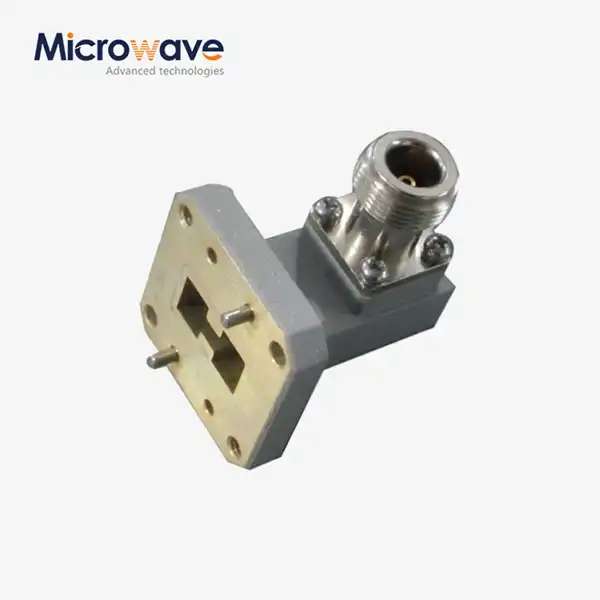 VIEW MORERight Angle Double Ridged WG To Coaxial Adapter
VIEW MORERight Angle Double Ridged WG To Coaxial Adapter VIEW MOREEnd Launch Double Ridged WG To Coaxial Adapter
VIEW MOREEnd Launch Double Ridged WG To Coaxial Adapter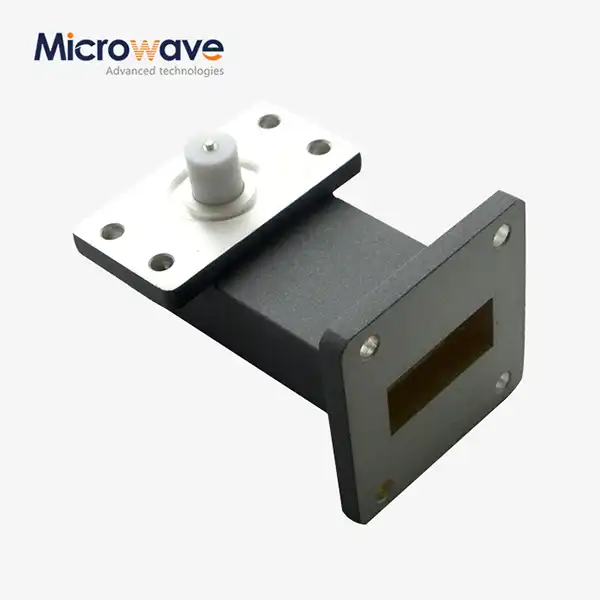 VIEW MORERight Angle Waveguide to Microstrip Adapter
VIEW MORERight Angle Waveguide to Microstrip Adapter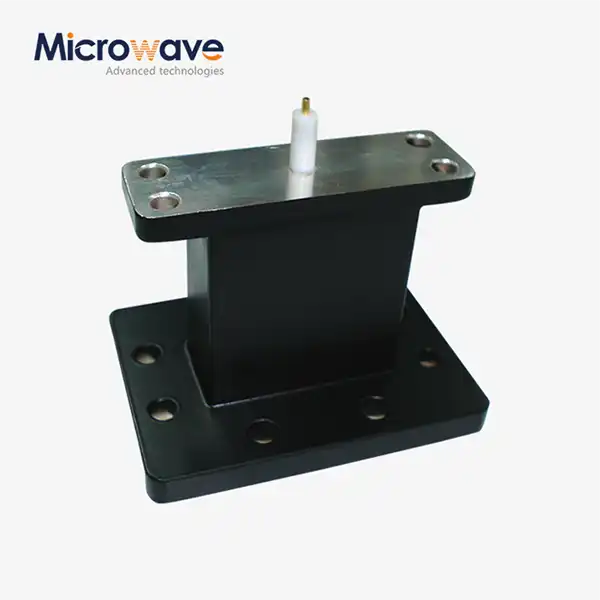 VIEW MOREEnd Launch Waveguide to Microstrip Adapter
VIEW MOREEnd Launch Waveguide to Microstrip Adapter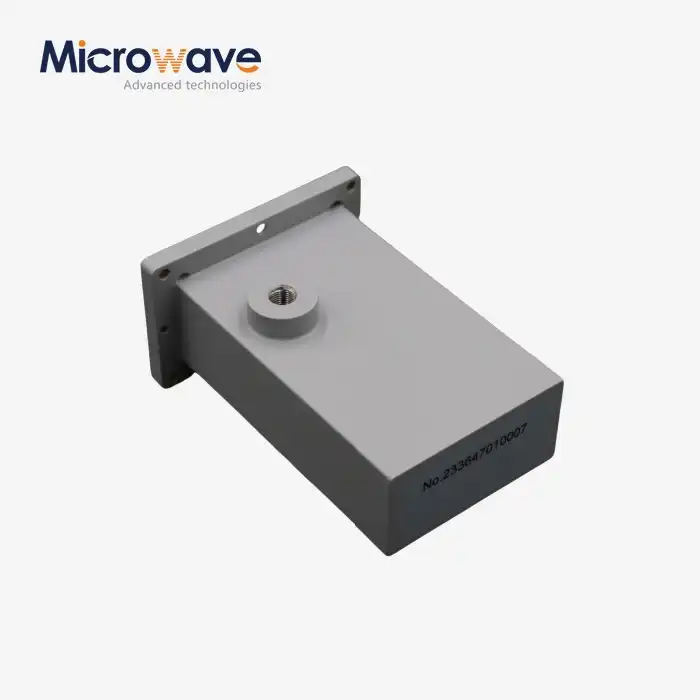 VIEW MOREWG Termination
VIEW MOREWG Termination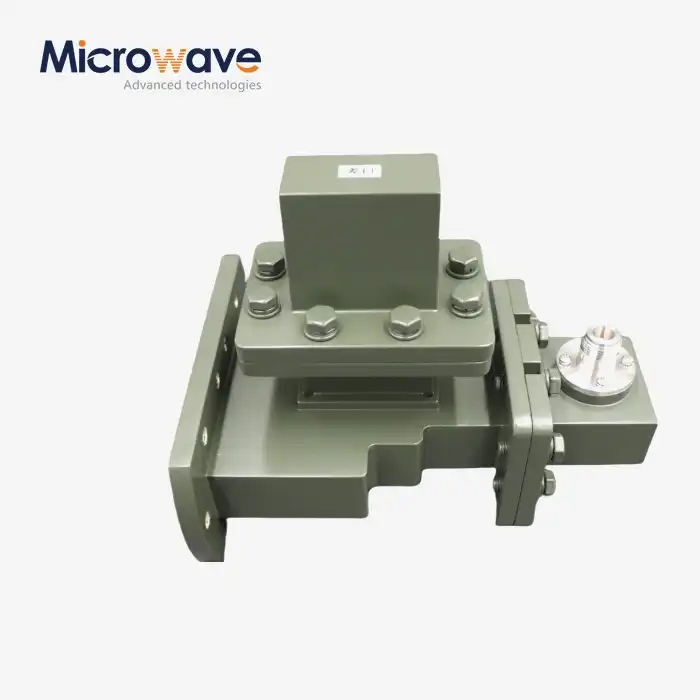 VIEW MOREE-Plane Tee
VIEW MOREE-Plane Tee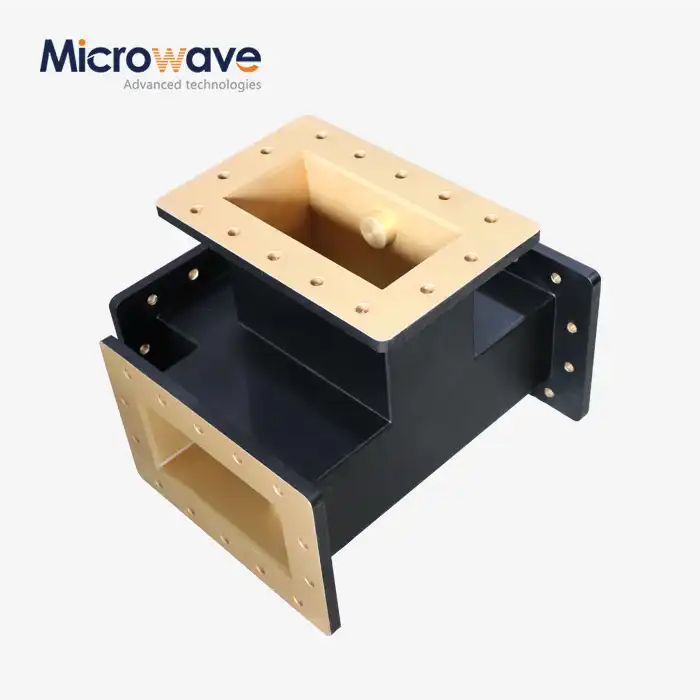 VIEW MOREH-Plane Tee
VIEW MOREH-Plane Tee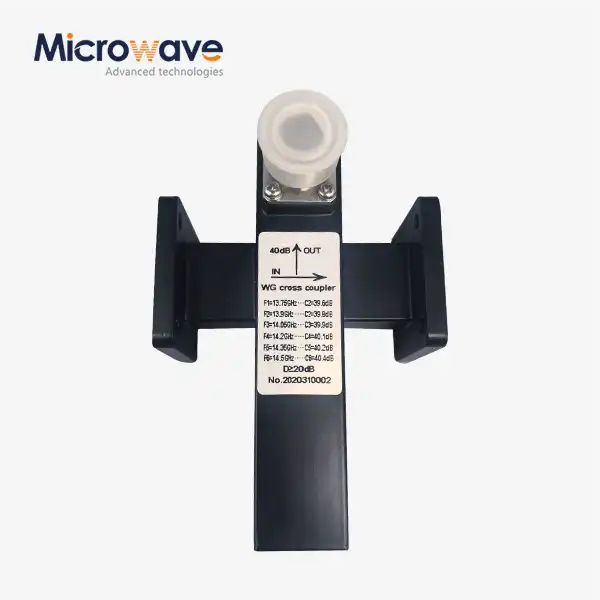 VIEW MORECrossguide Directional Coupler
VIEW MORECrossguide Directional Coupler




